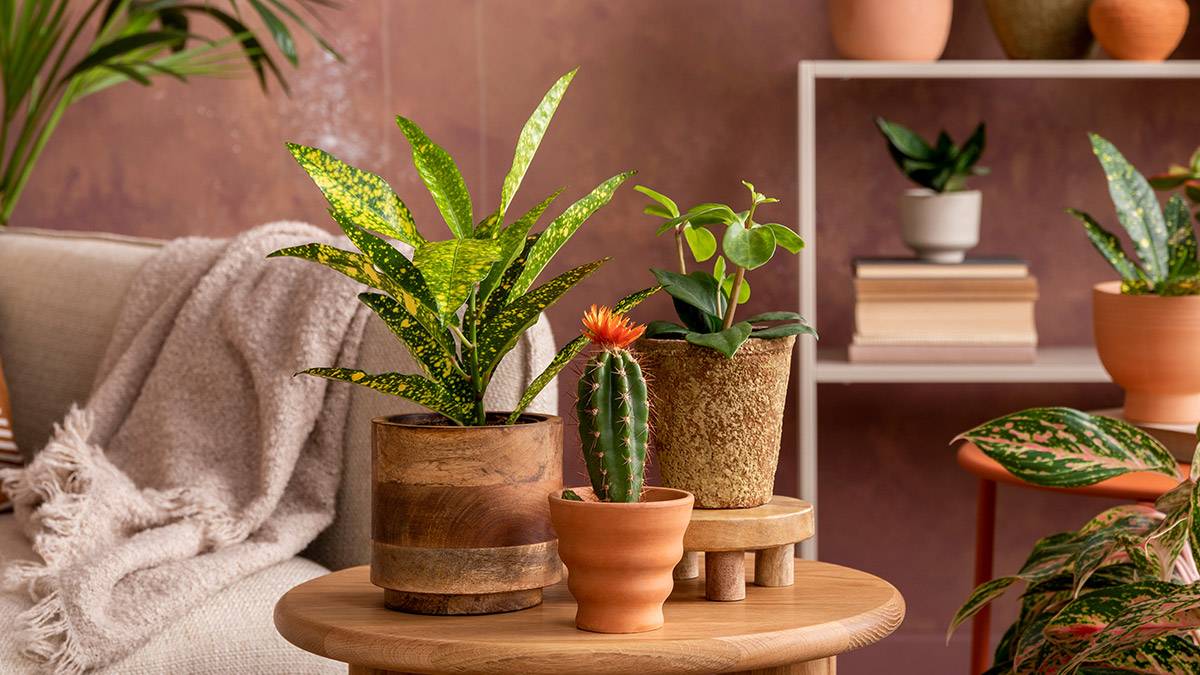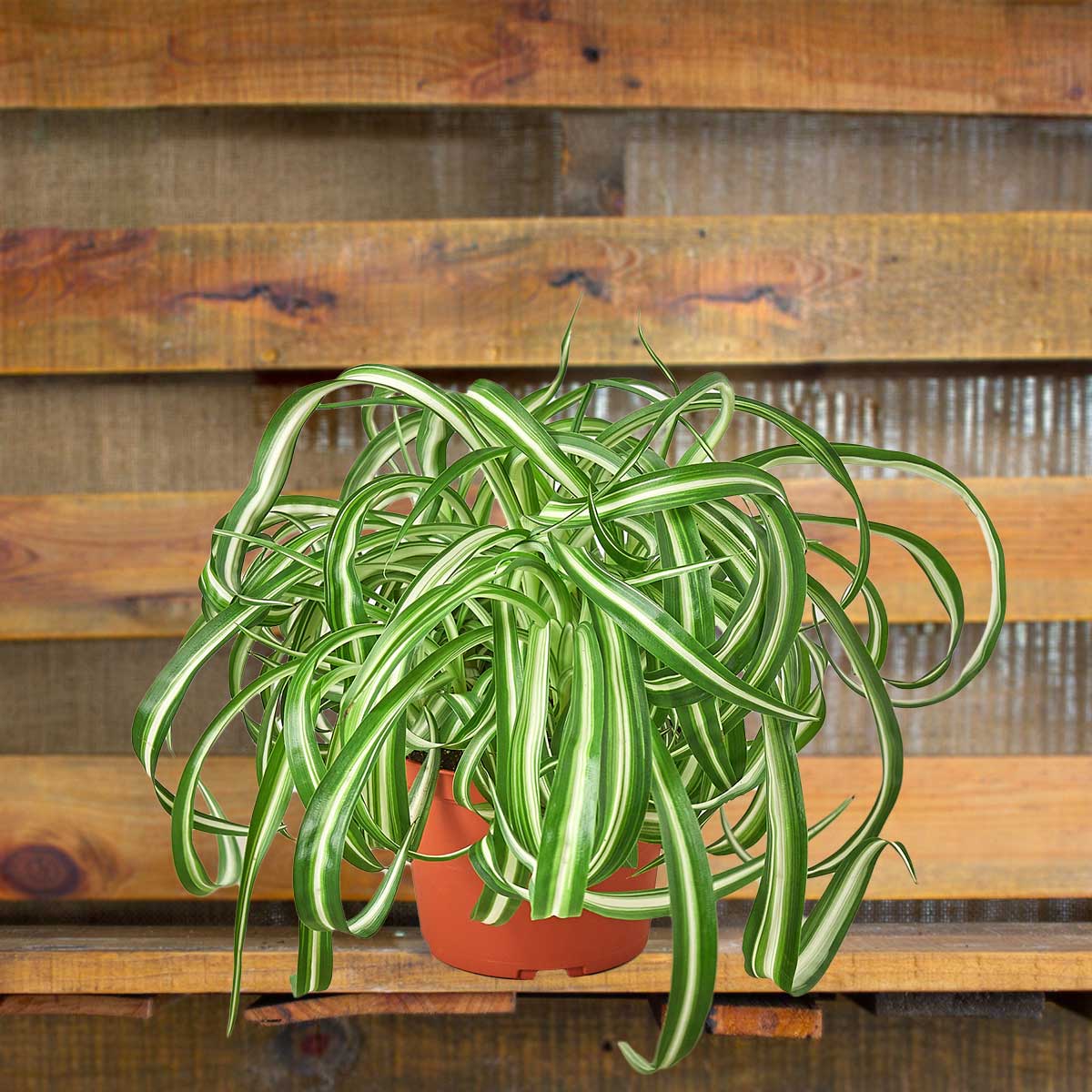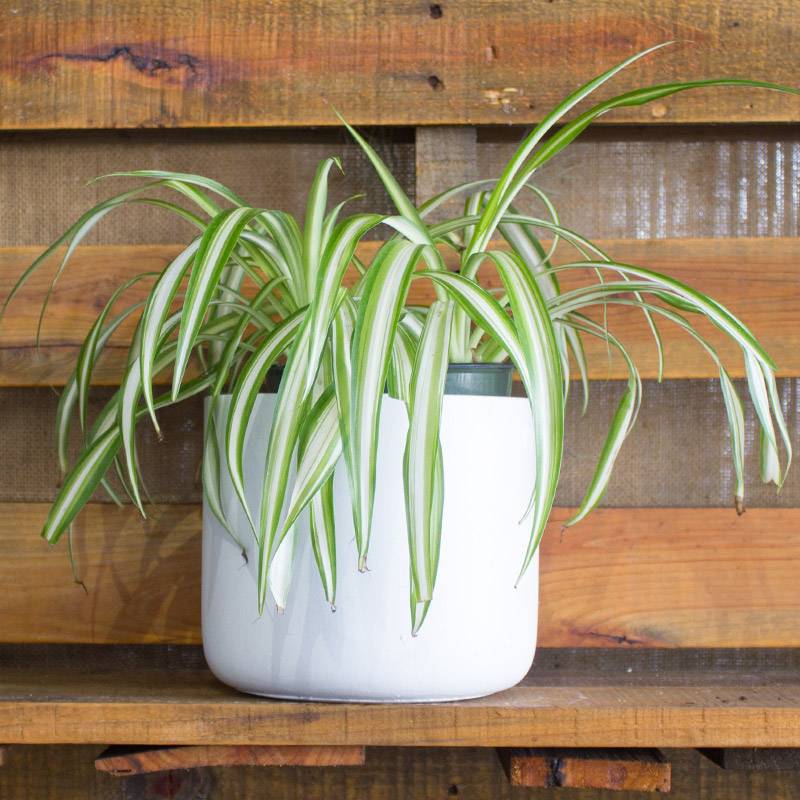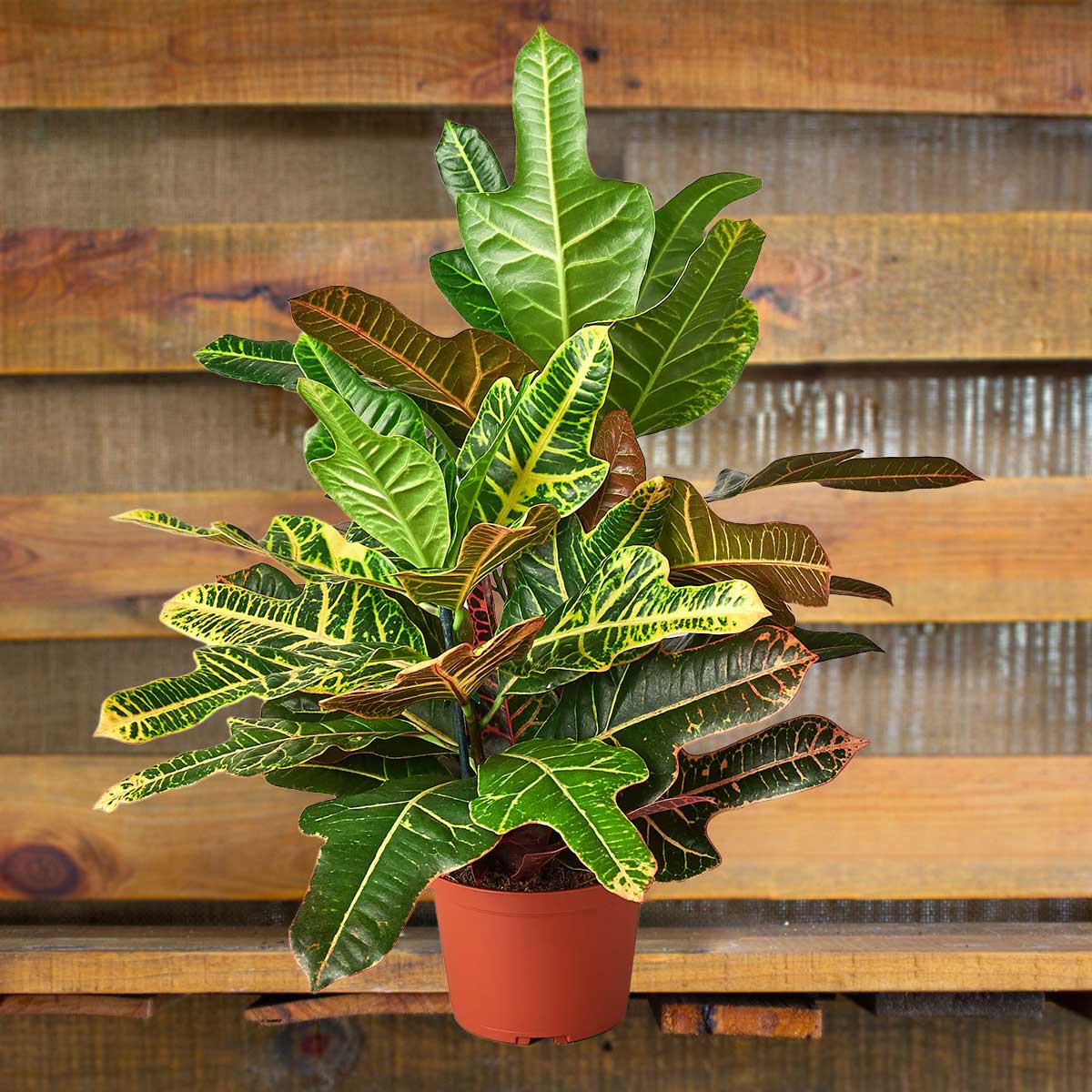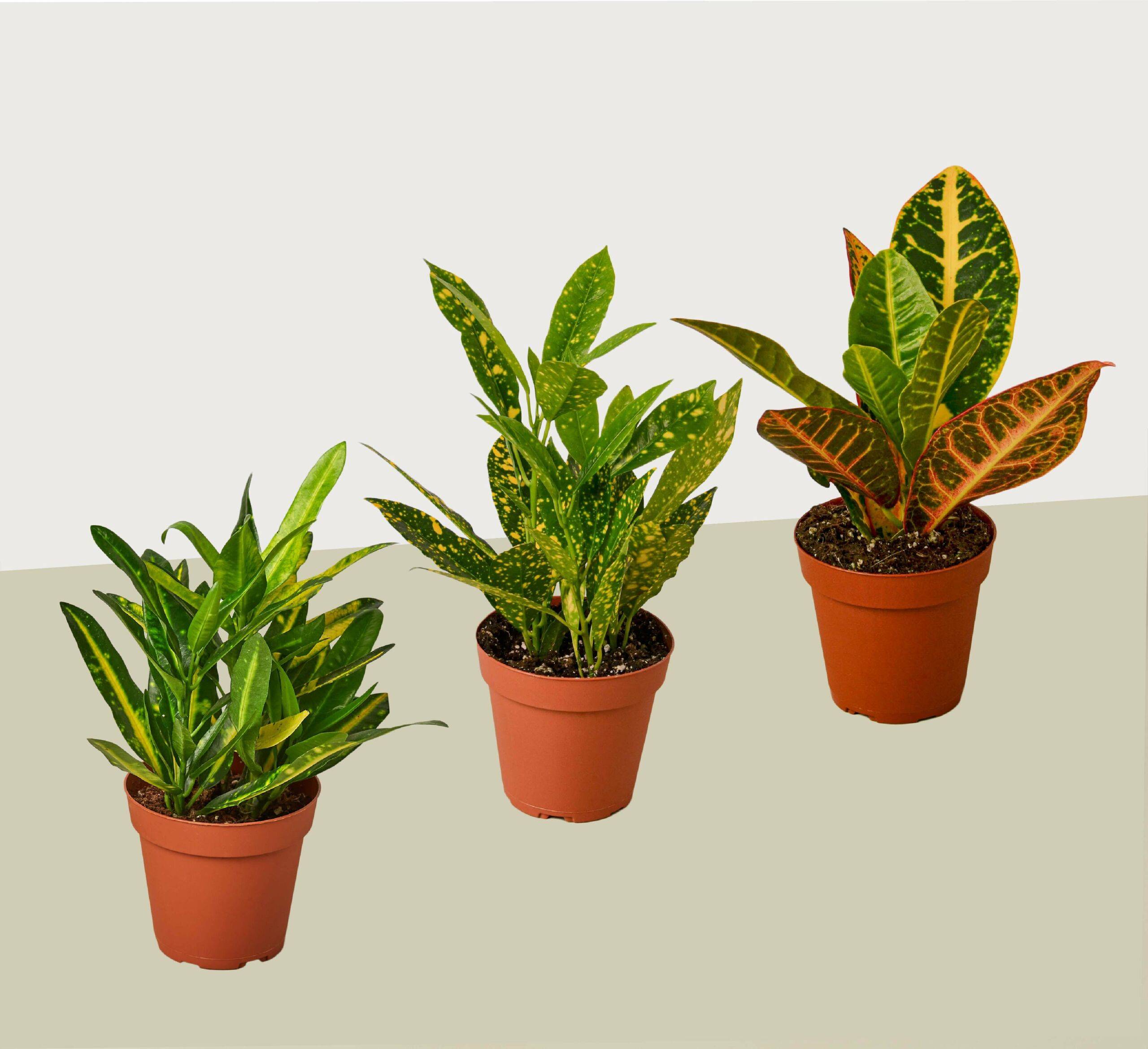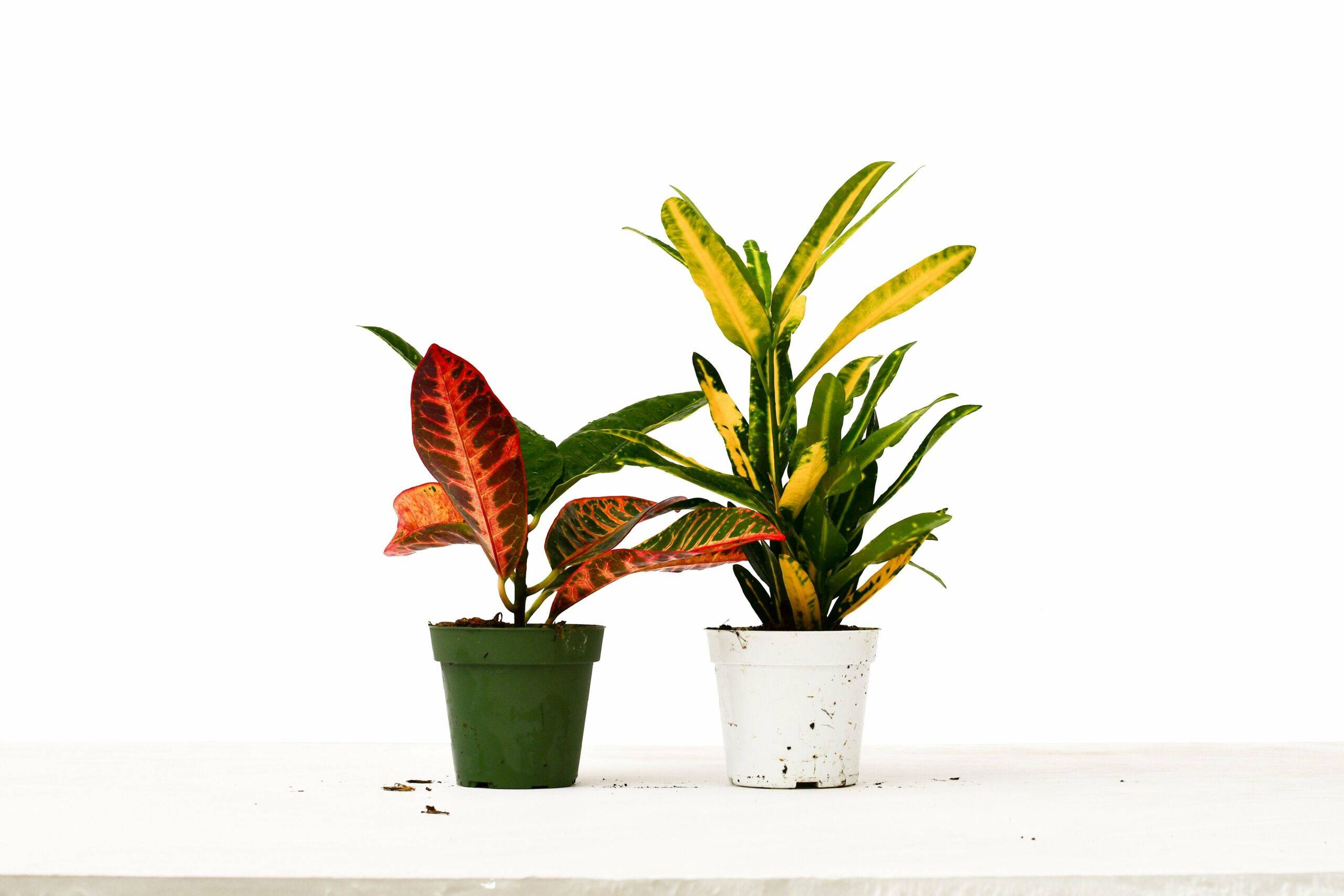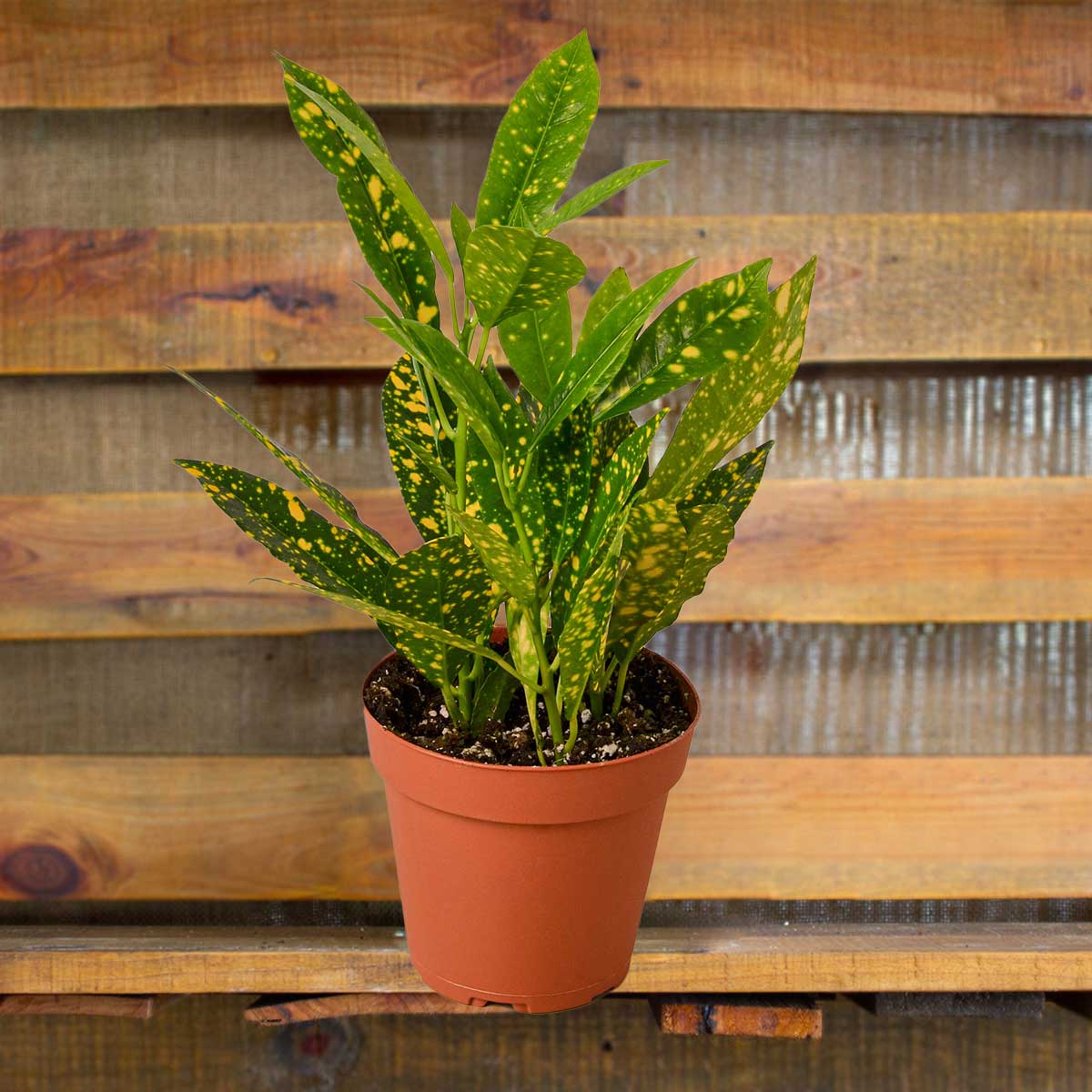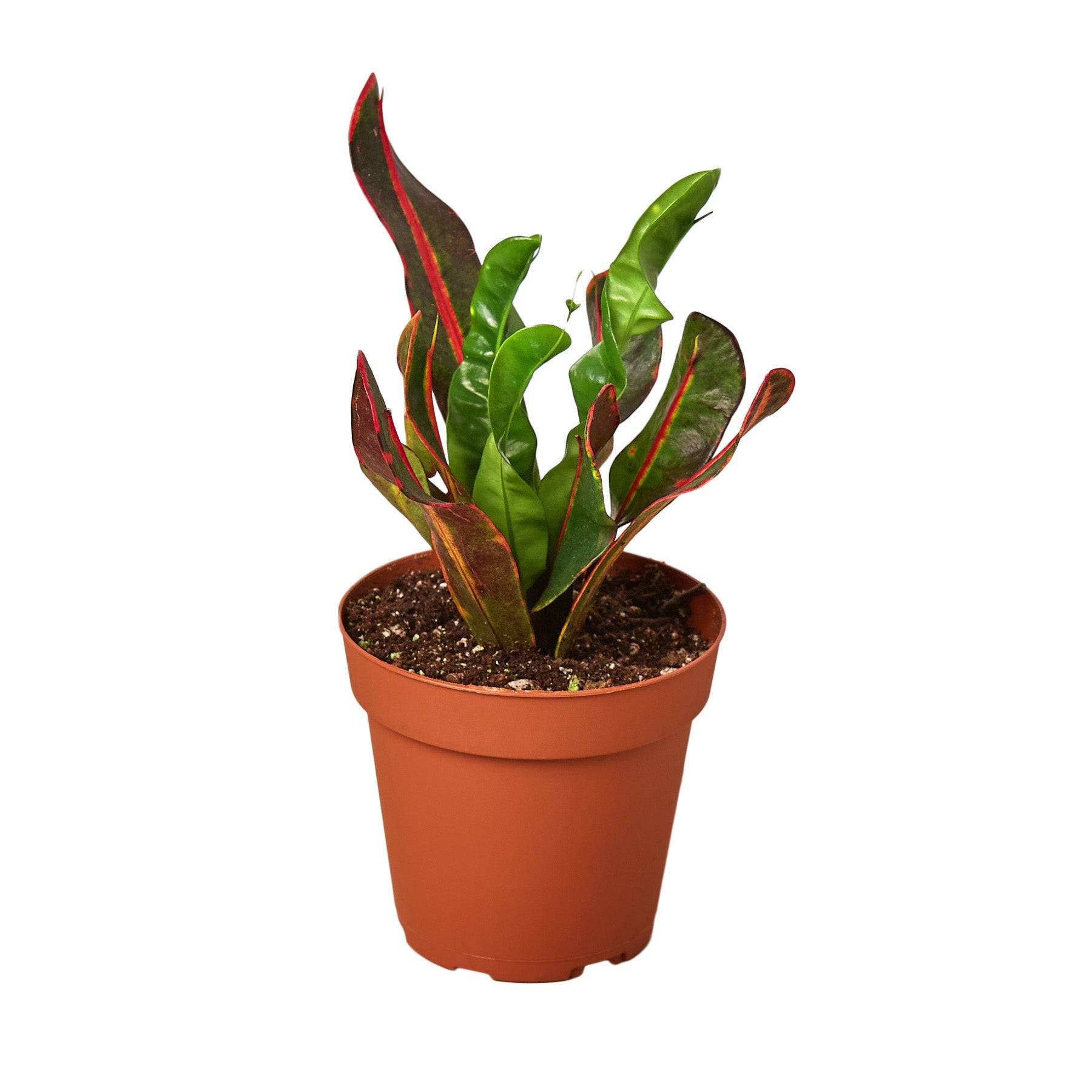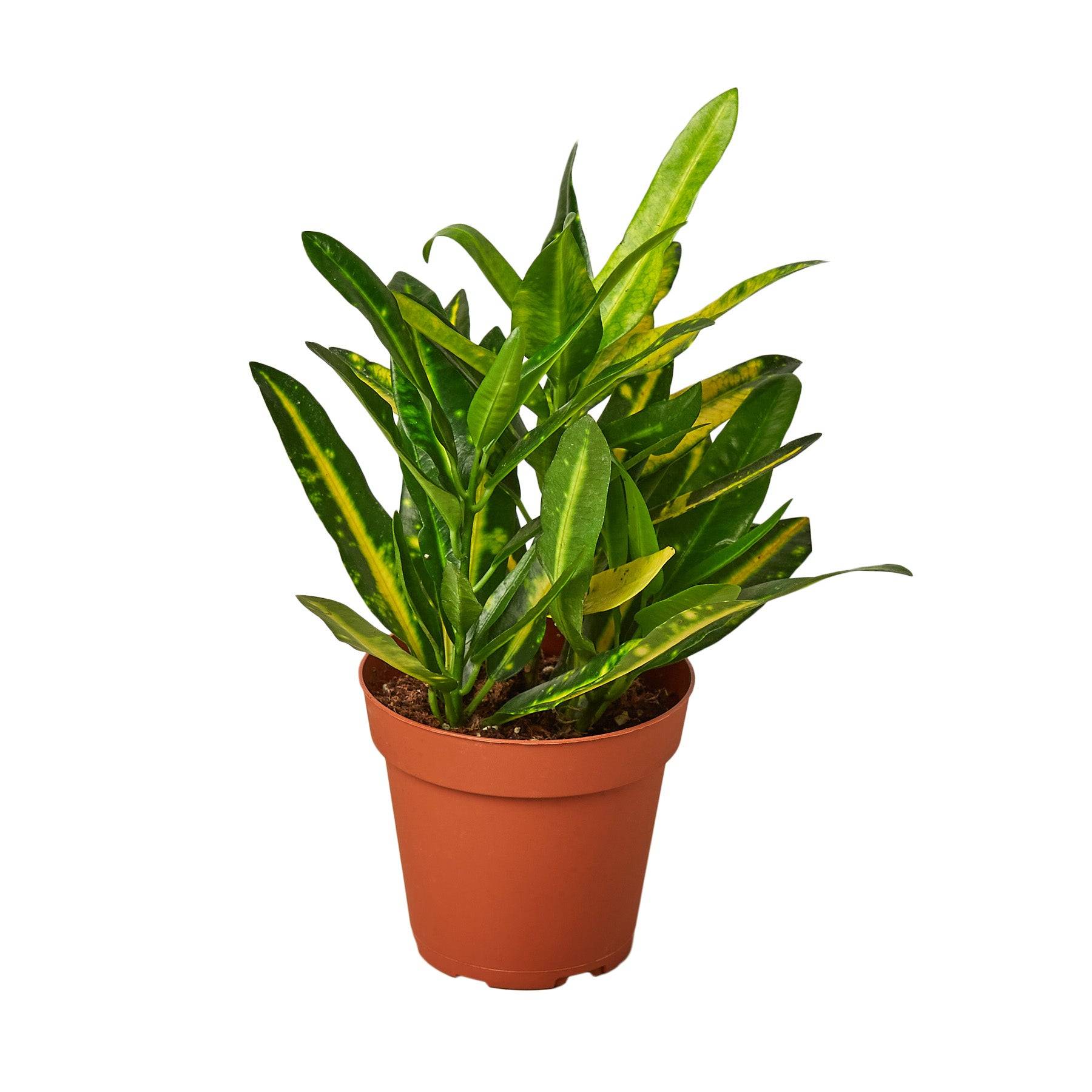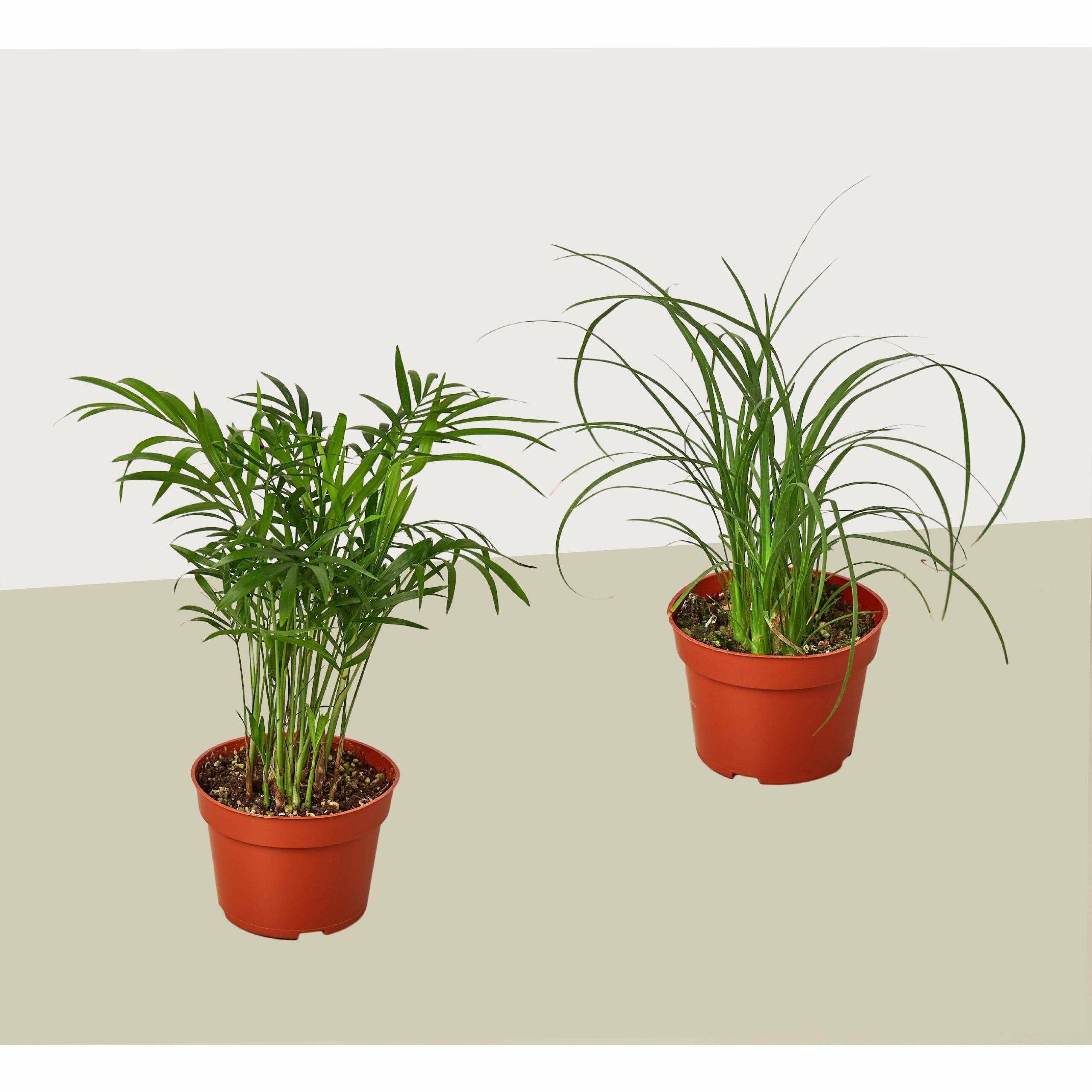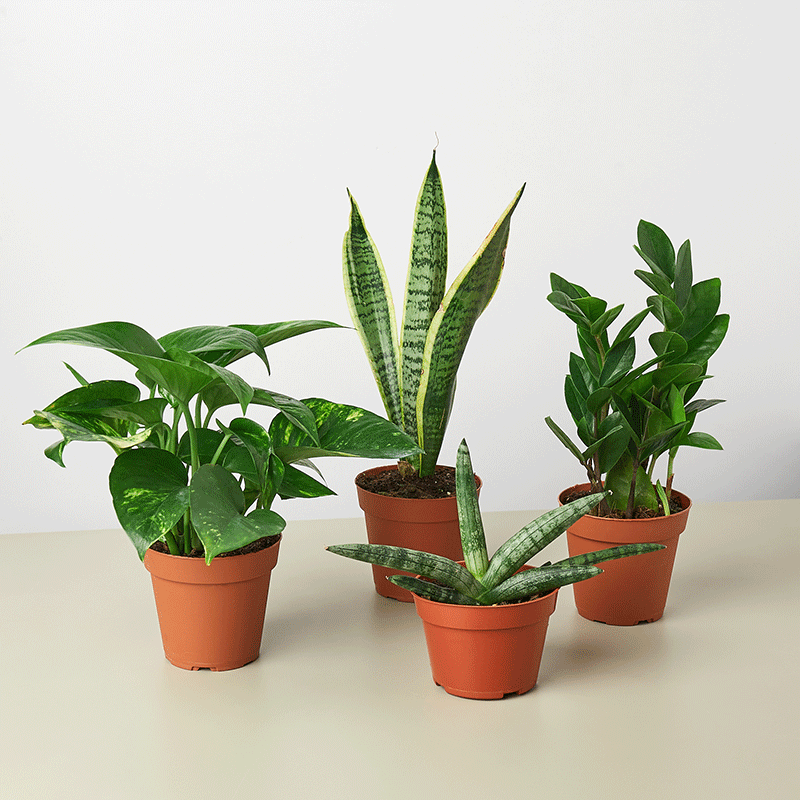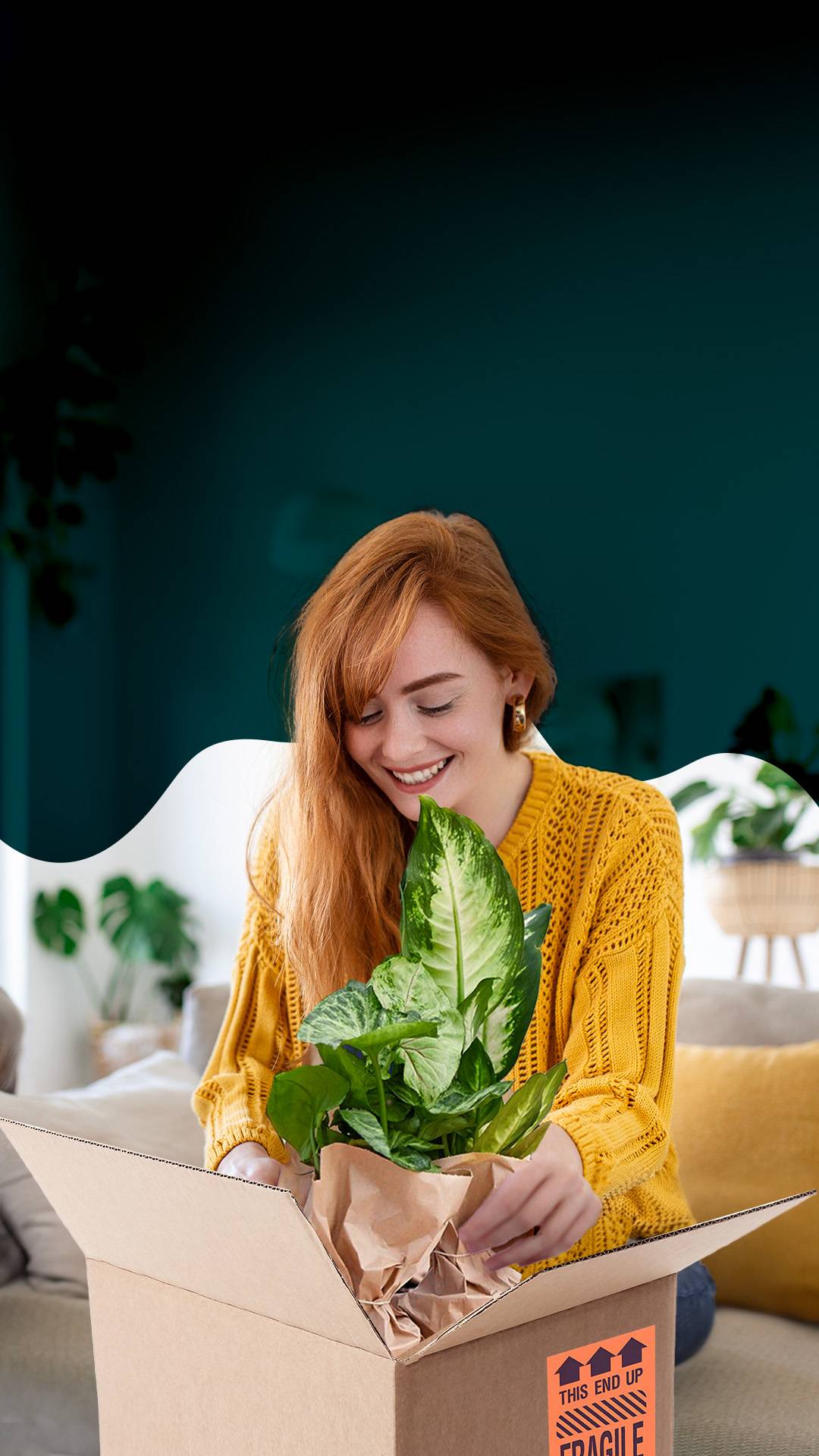Plant of the month club
Plant of the month club
Now that they’re settling in, you might have a few questions. Maybe you’re wondering how much sunlight your fern needs, or when to water your succulent… Good news! We’ve compiled some easy plant care tips specifically for your new leafy friend. Continue scrolling!
Got more questions? Our team of plant enthusiasts (who, by the way, also happen to be exceptional customer support staff) is just an email away. We’re here to help you out with any plant predicaments you might encounter.
We hope you’re loving your new plant pals!
Now that they’re settling in, you might have a few questions. Good news! We’ve compiled some easy plant care tips specifically for your new leafy friend.
Pre-Potted Plant of The Month
Acquaint yourself with your practical, ready to show off plant
Succulent Plant of The Month
Discover all there is to know about your new succulent buddy
Air Plants Plant of The Month
Become a pro at effortlessly caring for your new air plant
Brighten Up Your Home Or Cubicle with Fuss-Free Foliage
Green thumb or a fresh sprout, our monthly assortment of sturdy, snazzy, scarce, and foreign fronds will tickle your fancy every single time!
Say hello to charismatic greenery, making a beeline to your home approx every 30 days!

Monstera Swiss Cheese
April's Air Purifying Plant of the Month

Monstera Swiss Cheese
April's Air Purifying Plant of the Month

Monstera Swiss Cheese
April's Air Purifying Plant of the Month
April’s Air Purifying Plant of the Month
Monstera Swiss Cheese

Spider Plant Green
March's Pet-Friendly Plant of the Month

Image of Spider Plant Green houseplant for sale online from Forget Me Not Flower Market & HouseplantSale.com
March’s Pet-Friendly Plant of the Month
Spider Plant Green
How to Care for a Spider Plant: With Forget Me Not Flower Market, the grass – or your Spider plant – is always greener!
Whether you’re a photosynthesis fanatic, a newbie leaf lover, or someone yearning for adding a dash of nature to your urban jungle, guess what? You’ve hit the jackpot with spider plants! They’re as solid as a rock, amazingly adaptable, and are famous for their funky, spindly foliage. Yet they’re often misunderstood. Never fear, your plant whisperers at Forget Me Not Flower Market are here to set things straight!
- Light: Your Spider plant fancy the limelight, just without the UV burn! Too much sun can fry their leaves, while too little can dwarf their expansion. But they’re no divas – they can flex to accommodate various light situations.
Temperature: Resilience is the game of Spider plants. They can put up with temperatures anywhere between 55 and 80°F, but they fancy a cozy room temperature of 70-90°F.
- Watering: Like you enjoy a cool pint in the summer, your Spider plant also love a good soak. But they’re not into waterlogged soil, so let it air between watering sessions. In winter, water them as often as you go skiing.
- Soil: Spider plants prefer a well-draining, aerated potting mix. They’re not fussy and adapt to various soil types, as long as it drains well. A regular potting mix with a sprinkle of perlite and peat moss mixed in is just peachy.
- Fertilization: During the growing season, treat your Spider Plant to a special monthly meal – a balanced, water-soluble fertilizer. Be cautious not to overfeed, or they’ll end up with brown leaf tips – we don’t want a Spider plant with a bad hair day!
- Potting: Spider plants love to snug tight in their pots; they aren’t fond of being repotted often. When they do need a bigger home, choose a pot one size larger. Don’t forget those drainage holes. Read this super informative article about keeping your plants in the container they came in. If its time to repot, check this insightful article: Repotting Houseplants Tips
- Propagation: Got a green thumb? Try propagating your Spider plants! They produce small plantlets, so simply snip one off, plant it in moist soil, and maintain moisture until roots arrive.
- Juicy Tip: Now, for that juicy secret you’ve been waiting for… Our little green friends adore… drum roll, please… eggshells! Yup, you read it right! Some crushed eggshells in soil and voila! You’ve got yourself a calcium-infused, lush Spider plant. Think of it as an eggcellent hack – our gift to you!
Got Questions? Our plant geeks are all set to arm you with expert tips, advice, and a plethora of plant care items. We’re passionate about helping you transform your space into a verdant haven. Add our top-notch customer service, and you’ll be plant shopping like a pro in no time!
Eager to bring out the plant charmer in you? Let’s embark on this Spider plant taming journey together!
Get connected! 🪴💚
Plant enthusiasts like you who explored this care guide have also shown interest in the following green companions:

Croton Gold Dust
Air Purifying Plant Of The Month

Croton Gold Dust
Air Purifying Plant Of The Month

Croton Gold Dust
Air Purifying Plant Of The Month
March’s Air Purifying Plant of the Month
Croton Gold Dust
How to care for a Croton Plant: Croton Plant Care Playbook to Radiant, Robust Crotons
Tthe Croton Plant invites you to a 24/7 party! These tropical belles, parading proud leaves in every color your heart desires, are just the tangy splash your space is yearning for. But watch out, these verdant VIPs need VIP care. With our celebrity-class tools and advice, your move into the croton coterie will be smoother than a ripe avocado!
Light: Sun-Kissed! Crotons treasure their chill time under bright, loving light. Dim light? Expect dim colors, buddy.
- Watering: Hydrate Wisely: Just keep the soil moderately damp, not marshy. Drown them? Oh dear, you didn’t!
Humidity: The Perfect Mood: Crotons are total sun-babies, adoring warmth and high humidity. Drafts? They despise them more than your granny does chilly toes!
Soil: Sandy & a tinge of Acid. They root for well-draining, nutrient-laden soil with a pH swinging between 6.0 and 6.5.
Fertilization: Treat them with our sophisticated liquid fertilizer during the growth-promoting season for a thriving life.
Insider Secret: Can’t achieve high humidity? Try the ‘group method’. Group your crotons with other humidity-loving plants. They’ll create their own little rainforest. Remember, caring for a croton plant is like caring for a flamboyant friend. They need a little extra attention but reward you with a riot of color.
Kick-start your adventurous Croton voyage today with us. Shop today. Happy Croton-ing!

Spider Plant Green
March's Pet-Friendly Plant of the Month

Image of Spider Plant Green houseplant for sale online from Forget Me Not Flower Market & HouseplantSale.com
March’s Pet-Friendly Plant of the Month
Spider Plant Green
How to Care for a Spider Plant: With Forget Me Not Flower Market, the grass – or your Spider plant – is always greener!
Whether you’re a photosynthesis fanatic, a newbie leaf lover, or someone yearning for adding a dash of nature to your urban jungle, guess what? You’ve hit the jackpot with spider plants! They’re as solid as a rock, amazingly adaptable, and are famous for their funky, spindly foliage. Yet they’re often misunderstood. Never fear, your plant whisperers at Forget Me Not Flower Market are here to set things straight!
- Light: Your Spider plant fancy the limelight, just without the UV burn! Too much sun can fry their leaves, while too little can dwarf their expansion. But they’re no divas – they can flex to accommodate various light situations.
Temperature: Resilience is the game of Spider plants. They can put up with temperatures anywhere between 55 and 80°F, but they fancy a cozy room temperature of 70-90°F.
- Watering: Like you enjoy a cool pint in the summer, your Spider plant also love a good soak. But they’re not into waterlogged soil, so let it air between watering sessions. In winter, water them as often as you go skiing.
- Soil: Spider plants prefer a well-draining, aerated potting mix. They’re not fussy and adapt to various soil types, as long as it drains well. A regular potting mix with a sprinkle of perlite and peat moss mixed in is just peachy.
- Fertilization: During the growing season, treat your Spider Plant to a special monthly meal – a balanced, water-soluble fertilizer. Be cautious not to overfeed, or they’ll end up with brown leaf tips – we don’t want a Spider plant with a bad hair day!
- Potting: Spider plants love to snug tight in their pots; they aren’t fond of being repotted often. When they do need a bigger home, choose a pot one size larger. Don’t forget those drainage holes. Read this super informative article about keeping your plants in the container they came in. If its time to repot, check this insightful article: Repotting Houseplants Tips
- Propagation: Got a green thumb? Try propagating your Spider plants! They produce small plantlets, so simply snip one off, plant it in moist soil, and maintain moisture until roots arrive.
- Juicy Tip: Now, for that juicy secret you’ve been waiting for… Our little green friends adore… drum roll, please… eggshells! Yup, you read it right! Some crushed eggshells in soil and voila! You’ve got yourself a calcium-infused, lush Spider plant. Think of it as an eggcellent hack – our gift to you!
Got Questions? Our plant geeks are all set to arm you with expert tips, advice, and a plethora of plant care items. We’re passionate about helping you transform your space into a verdant haven. Add our top-notch customer service, and you’ll be plant shopping like a pro in no time!
Eager to bring out the plant charmer in you? Let’s embark on this Spider plant taming journey together!
Get connected! 🪴💚
Plant enthusiasts like you who explored this care guide have also shown interest in the following green companions:

Cissus Rotundifolia
Air Purifying Plant Of The Month
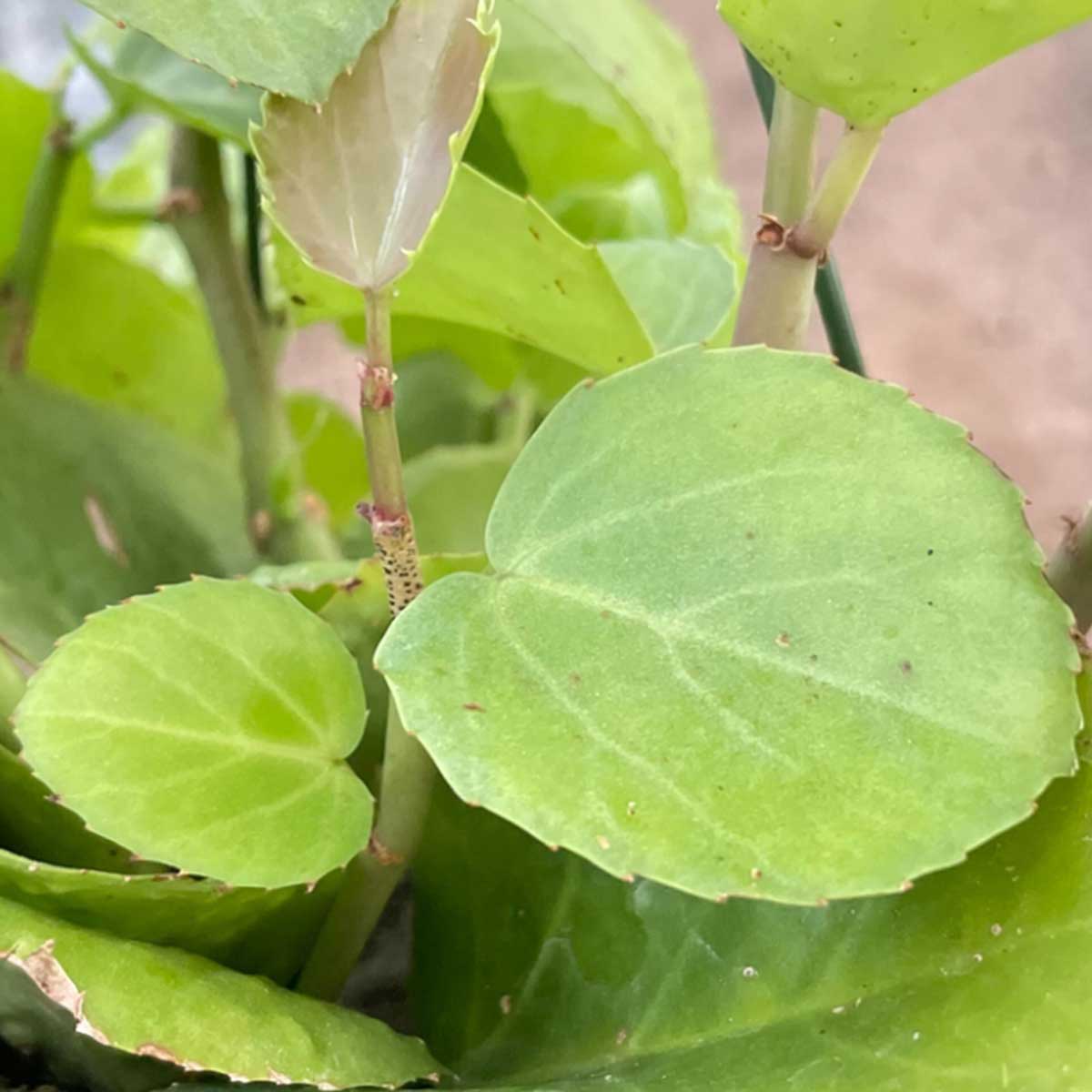
Cissus Rotundifolia
Air Purifying Plant Of The Month
February’s Air Purifying Plant of the Month
Cissus Rotundifolia
Cissus Plant Care – Your Green Thumb’s Best Friend
With a Cissus plant, it’s always a ‘growing’ good time!
You know all those times when you’ve wished for a plant buddy that doesn’t require the care of a newborn? Here, we introduce the Cissus Plant – a resilient green friend here to bring nature into your homes without the high maintenance.
- Light: Like a sun-loving diva, the Cissus plant loves bright, indirect light. But don’t worry, it won’t throw a tantrum in less-than-ideal conditions.
Temperature: Cissus plants enjoy a pleasant, comfortable room temperature – just like us! Keep them away from drafts and sudden temperature changes.
- Watering: Water it like you’d water a cactus. Too much love (water), and you could drown it. Keep it simple – water when the top 1 inch of soil dries out.
- Soil: Use a well-drained potting mix, ideally one that comprises peat moss, perlite, and compost.
- Fertilization: Feed your Cissus plant with a general-purpose, liquid houseplant fertilizer diluted to half the recommended strength every 2 weeks during the growing season (spring-summer). In the dormant months (winter), reduce the feeding to once a month. Remember, less is often more when it comes to plant food!
Potting: The Cissus Plant is not particular about its pot. However, ensure that your selected container has sufficient drainage holes, as Cissus does not like wet feet.
- Pruning: Keep your Cissus plant’s growth in check by pruning regularly. Snip, snip, and off goes those unruly twigs!
- Propagation: Propagation of the Cissus Plant is a breeze! You can simply take stem cuttings of about 4-6 inches in spring, remove the bottom leaves, and place them in water or directly in soil. Keep the cuttings in a well-lit area but out of direct sunlight. They will root in a few weeks.
- Pest Control: Despite its hardy nature, Cissus plants can be prone to spider mites. These tiny pests are not easily visible, but their damage is. If you notice your Cissus leaves turning yellow or getting tiny spots, give it a bath! Yes, gently shower the foliage with lukewarm water, ensuring that the underside of the leaves is also cleaned. This simple step can keep your Cissus healthy and pest-free.

Areca Palm
Learn Care Tips for your Areca Palm
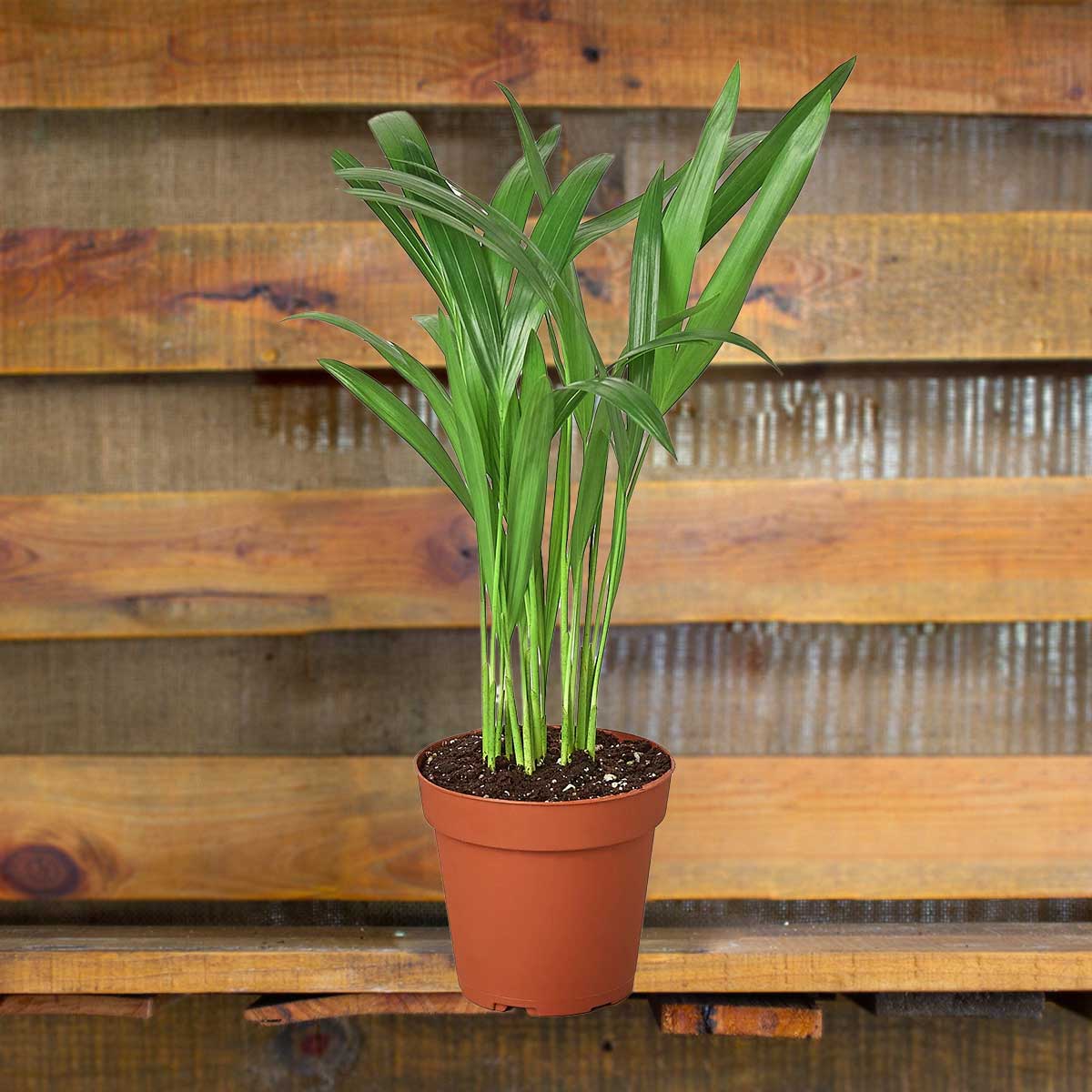
Areca Palm
Learn Care Tips for your Areca Palm

Areca Palm
Learn Care Tips for your Areca Palm
February’s Pet-Friendly Plant of the Month
Palm Areca
How to Care for a Palm Plant
Let’s Turn Your Palm Plant from Tropical Dream to Indoor Legend – The Ultimate Palm Plant Care Guide
Palm trees can seem about as understandable as quantum physics, but don’t worry, we’ve got the decoder ring. With the right goodies and a smidgen of wisdom, you’re about to become the Palm-Pro of your postal code. Here’s your blueprint to palm glory.
- Light: Bright but indirect, as if your palm’s lounging under a Caribbean parasol. Direct light? Nope. That’s like a sunburn on the fronds. Now, who wants that?!
- Temperature: Palm fronds are sun-seekers, not snow-lovers. Stay clear of frosty drafts or temperamental temperature drops because your palm prefers its weather balmy. Think soothing 65-75°F
- Humidity: Picture the humidity of the Amazon rainforest. If your home’s air is drier than a comedian’s wit, give your palm a spa day with a humidifier or a water tray date!
Watering: Keep the soil consistently moist but not soggy. Water your Alocasia Pink when the top inch of soil feels dry. Ensure proper drainage to prevent root rot.
- Soil: Good drainage is key, because nobody likes to sit in a muddy puddle. Not even your palm. Your palm tree is more Bond than Bog, and prefers its soil well-aerated, with a pH balance cooler than a cucumber. Use a well-draining potting mix to prevent waterlogging. Palms generally prefer slightly acidic to neutral soil.
- Fertilization: Go for a balanced, water-soluble food during the season of sprouting. But hold your green horses! Over-fertilizing can be as troublesome as over-watering. Follow the package instructions and avoid over-fertilizing.
- Potting: Palm trees are the Wallflowers of the plant world; they don’t take kindly to frequent shifts. Only repot when it’s bursting at the seams or going in root loops.
- Pruning: Show the door to any yellow or brown leaves, but remember, green means go! Handle your leafy friend with care during the prune-a-thon.
- Pest Control: On guard! Unwanted guests like spider mites or scale could be gatecrashing your green party. Strike quick with insecticidal soap or neem oil on spotting the first intruder!
Propagation: Feeling plucky? Multiply your palms using seeds or baby shoots that sprout at the base of older plants.
At Forget Me Not Flower Market, we’re as constant as your guardian angel, guiding you through your palm-plant escapades. With our top-tier products and wisdom worth its weight in gold, your palm’s future looks greener than ever. Let’s create a leafy, tropical oasis together!
“Everyone’s got a green thumb; we just help you realize it’s not just for hitchhiking!”
– The Flower Lady
Plant enthusiasts like you who explored this care guide have also shown interest in the following green companions:

Areca Palm
Learn Care Tips for your Areca Palm

Areca Palm
Learn Care Tips for your Areca Palm

Areca Palm
Learn Care Tips for your Areca Palm
February’s Pre-Potted Plant of The Month
PALM ARECA
How to Care for a Palm Plant
Let’s Turn Your Palm Plant from Tropical Dream to Indoor Legend – The Ultimate Palm Plant Care Guide
Palm trees can seem about as understandable as quantum physics, but don’t worry, we’ve got the decoder ring. With the right goodies and a smidgen of wisdom, you’re about to become the Palm-Pro of your postal code. Here’s your blueprint to palm glory.
- Light: Bright but indirect, as if your palm’s lounging under a Caribbean parasol. Direct light? Nope. That’s like a sunburn on the fronds. Now, who wants that?!
- Temperature: Palm fronds are sun-seekers, not snow-lovers. Stay clear of frosty drafts or temperamental temperature drops because your palm prefers its weather balmy. Think soothing 65-75°F
- Humidity: Picture the humidity of the Amazon rainforest. If your home’s air is drier than a comedian’s wit, give your palm a spa day with a humidifier or a water tray date!
Watering: Keep the soil consistently moist but not soggy. Water your Alocasia Pink when the top inch of soil feels dry. Ensure proper drainage to prevent root rot.
- Soil: Good drainage is key, because nobody likes to sit in a muddy puddle. Not even your palm. Your palm tree is more Bond than Bog, and prefers its soil well-aerated, with a pH balance cooler than a cucumber. Use a well-draining potting mix to prevent waterlogging. Palms generally prefer slightly acidic to neutral soil.
- Fertilization: Go for a balanced, water-soluble food during the season of sprouting. But hold your green horses! Over-fertilizing can be as troublesome as over-watering. Follow the package instructions and avoid over-fertilizing.
- Potting: Palm trees are the Wallflowers of the plant world; they don’t take kindly to frequent shifts. Only repot when it’s bursting at the seams or going in root loops.
- Pruning: Show the door to any yellow or brown leaves, but remember, green means go! Handle your leafy friend with care during the prune-a-thon.
- Pest Control: On guard! Unwanted guests like spider mites or scale could be gatecrashing your green party. Strike quick with insecticidal soap or neem oil on spotting the first intruder!
Propagation: Feeling plucky? Multiply your palms using seeds or baby shoots that sprout at the base of older plants.
At Forget Me Not Flower Market, we’re as constant as your guardian angel, guiding you through your palm-plant escapades. With our top-tier products and wisdom worth its weight in gold, your palm’s future looks greener than ever. Let’s create a leafy, tropical oasis together!
“Everyone’s got a green thumb; we just help you realize it’s not just for hitchhiking!”
– The Flower Lady
Plant enthusiasts like you who explored this care guide have also shown interest in the following green companions:

Tillandsia Velintulina
February's Air Plant Of The Month
February’s Air Plant of The Month
Tillandsia Veluntina, Moonlight, Capitata Peach
Welcome to the airy, light, and delightful world of Tillandsia Air Plants. The Easiest Plant to Love and The Hardest Plant to Kill
Air plants are like the rebels of the plant world, thriving without soil thanks to their special adaptations.
A plant that doesn’t need soil to grow? Yup, that’s right. These incredible life forms are epiphytic, meaning they derive moisture and nutrients from the air, rather than from soil. So, you can say goodbye to potting soil and dirt under your fingernails!
They are also incredibly resilient, making them perfect for those with, shall we say…a less-than-stellar track record with plants. These leafy survivors can put up with a lot, but with just a little love and attention, they’ll reward you with a stunning bloom that will make your heart (and Instagram feed) sing.
How to care for air plants: The Basics
Air Plant Care is as easy as 1-2-3
When caring for these beauties, keeping a few things in mind is essential. First off, they love bright but indirect light, so placing them near a window works like magic. They’re also relatively low maintenance when it comes to watering – they’ll be thriving even if you occasionally forget their existence (don’t worry, we won’t tell them)!😉 A mist or quick soak once every couple of weeks is usually enough to keep them hydrated. However, make sure you let them dry thoroughly afterward to prevent rotting. And if you want your air plant to flourish even more, treat it with a gentle fertilizer every few months. With just a little TLC your air plants will thrive and add that touch of whimsy to your space!
- Watering: Contrary to their name, Air Plants do require water. A good soaking in a bath of room temperature water for about 20-30 minutes once a week will do the trick. Shake off any excess water and let them dry upside down to prevent rotting.
- Lighting: Air Plants love bright, indirect light. Place them near a window, but not in direct sunlight.
- Temperature: Keep your Air Plants happy by maintaining a temperature between 50-90°F. They can handle a wide range, but they’re not fans of frost or extreme heat.
Still unsure about your ability to care for these little wonders? Just remember our motto: “The easiest plant to love and the hardest plant to kill.” You got this!
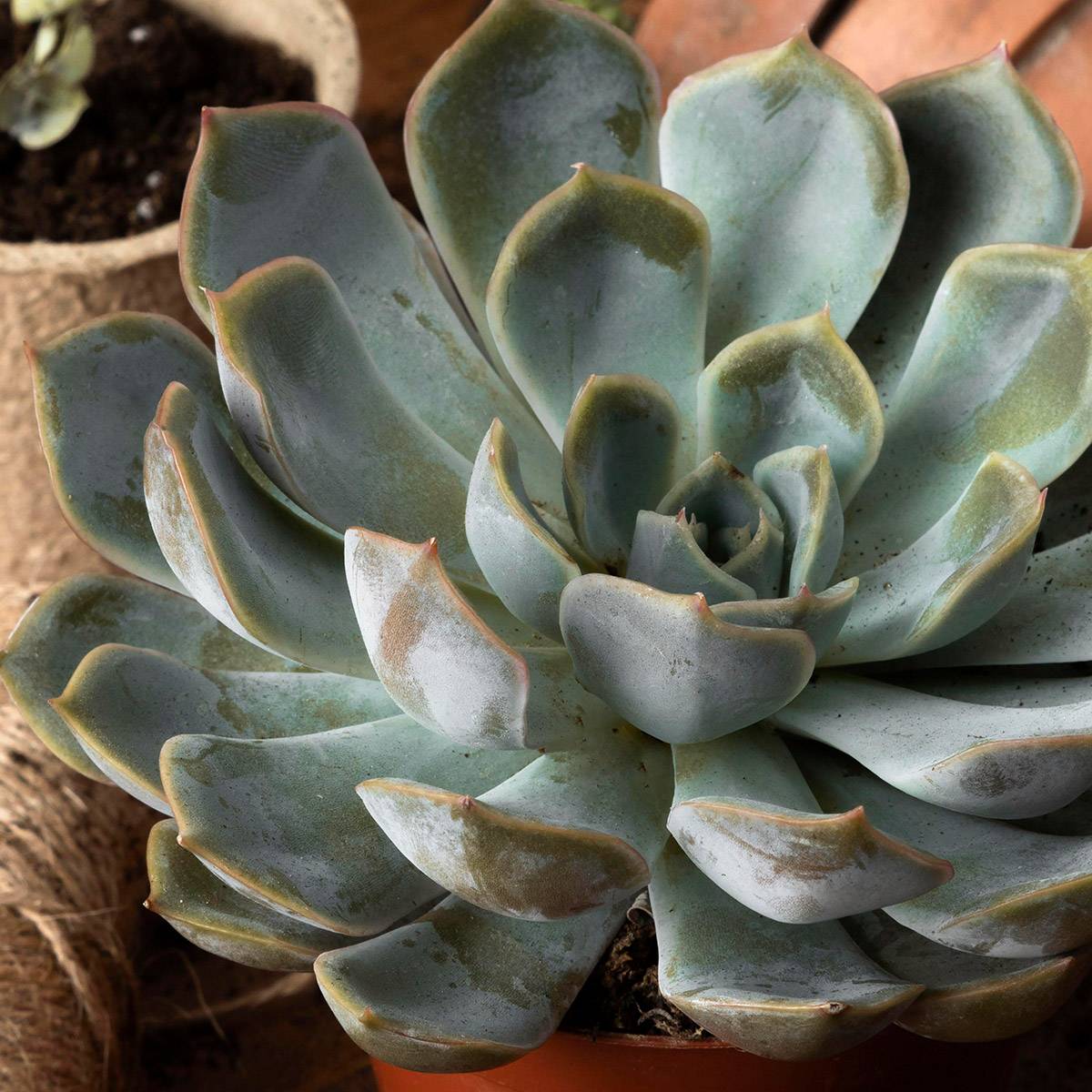
Echeveria Lilicana
Succulent of the Month

Echeveria Lilicana Succulent
February’s Succulent of The Month
Echeveria Lilicana
Succulent Plants: Ace the Game of Succulent Plant Care 🌿💰
Dive headfirst into the universe of succulents, tiny green wonders boasting larger-than-life charisma! These fuss-free plants bring life to your spaces without demanding much, making them the perfect companions for all plant lovers — on a kitchen windowsill, a chic office desk, or a flourishing outdoor garden.
At Forget Me Not Flower Market, we’re more than convinced that succulents are no fleeting fad. They’re lifestyle catalysts! These green beauties speak to interior designers, event planners, and every plant lover’s soul alike, offering an easy-peasy way to inject your spaces with a dose of tranquil green magnificence, minus any care dramas.
- Light: Radiance: Permission to sunbathe granted! Succulents are shameless sun worshippers! They thrive best soaking up the gentle, filtered sunshine from a south or east-facing window. Plant your succulent in a sunny spot and watch these evergreen charmers bloom their way into your hearts and homes.
- Temperature: Not too cozy, Not too cool! Like Goldilocks, succulents enjoy the warmth in the 60-80°F range. Too hot or too cold won’t do; the succulent mantra channels the ‘just right zone’!
- Watering: Less is more! These little green champs are like the desert’s reply to camels — storing water and thriving in conditions where other plants might turn up their leaves in protest. Just remember, hydrating a succulent is all about soaking, not flooding!
Soil: A beach party in a pot! Succulents yearn for beach-like vibes — sandy soils that let water drain quickly. The perfect potting mix? A blend of sand and perlite. It’s like sending them a mini beach vacation without leaving their pots.
- Fertilization: Light meals, please! Succulents don’t believe in heavy feasts. A little balanced, water-soluble fertilizer during spring and summer is all they need to stay fit, fresh, and fab!
- Potting: Room to Breathe and Groove! Your potted pal loves a good stretch — terracotta pots with drainage holes give your succulents room to breathe and avoid the dreaded water-logged roots of doom.
- Prunning: Trim to win! A snip here and a clip there keep your succulent shipshape. Plus, sprucing them up encourages a lush growth of new foliage — a bonus!
- Propagation: Sharing is caring! Succulents are natural sharers. One leaf or stem cutting can birth a whole new plant. Spread the joy of succulent gardening among your circle — it’s a gift that keeps giving!
Pest Control: Fend Off Pesky Pests! Look out for plant troublemakers like mealybugs, aphids, or spider mites, thinking your precious succulents are free real estate. Fight off these unwelcome guests with insecticidal soap or neem oil for a swift pest-busting punch.
Our infatuation with succulents is infectious, and we’re excited to guide you in fostering a vibrant, robust addition to your green family. Embark on your succulent quest with us to discover the spark these petite but potent plants can ignite in your life!
Got questions or need guidance? We’re all ears (and green thumbs). Ping us directly. We’re eager to help you kickstart your succulent shenanigans!🪴💚

Rainbow Cactus
February's Cactus of the Month
February’s Cactus of The Month
Rainbow Cactus
Welcome to the airy, light, and delightful world of Tillandsia Air Plants. The Easiest Plant to Love and The Hardest Plant to Kill
Air plants are like the rebels of the plant world, thriving without soil thanks to their special adaptations.
A plant that doesn’t need soil to grow? Yup, that’s right. These incredible life forms are epiphytic, meaning they derive moisture and nutrients from the air, rather than from soil. So, you can say goodbye to potting soil and dirt under your fingernails!
They are also incredibly resilient, making them perfect for those with, shall we say…a less-than-stellar track record with plants. These leafy survivors can put up with a lot, but with just a little love and attention, they’ll reward you with a stunning bloom that will make your heart (and Instagram feed) sing.
How to care for air plants: The Basics
Air Plant Care is as easy as 1-2-3
When caring for these beauties, keeping a few things in mind is essential. First off, they love bright but indirect light, so placing them near a window works like magic. They’re also relatively low maintenance when it comes to watering – they’ll be thriving even if you occasionally forget their existence (don’t worry, we won’t tell them)!😉 A mist or quick soak once every couple of weeks is usually enough to keep them hydrated. However, make sure you let them dry thoroughly afterward to prevent rotting. And if you want your air plant to flourish even more, treat it with a gentle fertilizer every few months. With just a little TLC your air plants will thrive and add that touch of whimsy to your space!
- Watering: Contrary to their name, Air Plants do require water. A good soaking in a bath of room temperature water for about 20-30 minutes once a week will do the trick. Shake off any excess water and let them dry upside down to prevent rotting.
- Lighting: Air Plants love bright, indirect light. Place them near a window, but not in direct sunlight.
- Temperature: Keep your Air Plants happy by maintaining a temperature between 50-90°F. They can handle a wide range, but they’re not fans of frost or extreme heat.
Still unsure about your ability to care for these little wonders? Just remember our motto: “The easiest plant to love and the hardest plant to kill.” You got this!
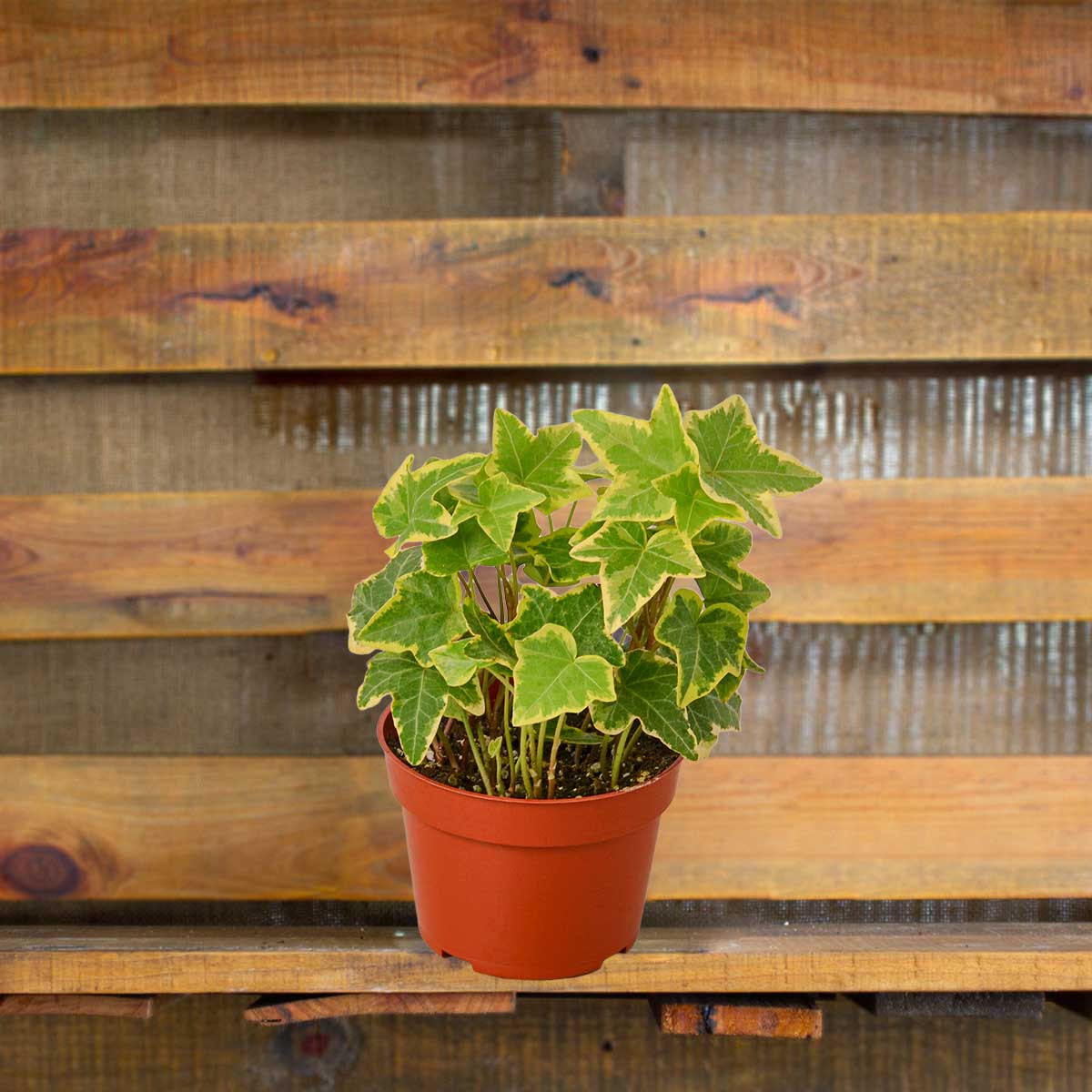
Gold Child English Ivy (Hedera helix)
Air Purifying Plant Of The Month

Gold Child English Ivy (Hedera helix)
Air Purifying Plant Of The Month

Gold Child English Ivy (Hedera helix)
Air Purifying Plant Of The Month

Gold Child English Ivy (Hedera helix)
Air Purifying Plant Of The Month
January’s Air Purifying Plant of the Month
Gold Child English Ivy
Here’s your VIP access to the care secrets that will make your English Ivy (Hedera helix) thrive:
Unleash the glittery magic of your English Ivy plant and let its vibrant leaves turn your space into a botanical disco🌿✨💃
Elevate your plant care game and let the glam flow. Here’s your VIP access to the care secrets that will make your English Ivy thrive:
Light: Location, Location, Location! English Ivy is a versatile dancer—it can tango in bright, indirect light or waltz in partial shade. Just avoid harsh sunlight; it’s not a fan of sunburns.
- Temperature: English Ivy enjoys temperatures between 50-75°F. It can handle a bit of temperature variability, but extreme conditions are a no-no.
Humidity: Mist Me, Please! English Ivy enjoys a bit of humidity. A light misting or placing a tray of water nearby will make it feel pampered.
Watering: Say no to waterlogging; it’s the golden rule. Keep the soil feeling like a slightly damp sponge, not a soggy mess. Let the top inch dry before summoning the watering can. Your English Ivy prefers sips, not swims
- Soil: Treat your Ivy to a well-draining potting mix. It’s like giving it a plush sofa to lounge on. A mix rich in organic matter is its VIP seating.
- Fertilization: Moderate Feeding! During the growing season (spring and summer), offer a diluted, balanced liquid fertilizer every 4-6 weeks. Your Ivy will relish the extra nutrients.
Potting: Consider repotting your English Ivy plant every year when it becomes root-bound or outgrows its container. Read this super informative article about keeping your plants in the container they came in. If its time to repot, check this insightful article: Repotting Houseplants Tips
Pruning: Don’t hesitate to trim your Ivy when it gets unruly. Pruning promotes bushiness and keeps it in top shape. It’s like giving it a spa day!
- Pest Control: Become a pest patrol- Keep an eye out for pests like spider mites and aphids. A gentle shower or neem oil can be your Ivy’s superhero against these invaders.
- Support System: If your Ivy starts stretching its limbs, give it a trellis or a climbing buddy for support to help your English Ivy houseplant reach new heights.
English Ivy Plant Care Tip From The Flower Lady
Leafy Shower Time: Every once in a while, treat your English Ivy to a refreshing shower.
Place it in the bathroom or give it a gentle rinse under the showerhead. Not only will this cleanse the leaves, but it also provides a humidity boost.
Why It Works:
Dust Be Gone: The shower helps remove dust that can accumulate on the leaves. Clean leaves can photosynthesize more effectively, leading to a healthier plant.
Hydration Happiness: English Ivy, like many plants, enjoys a bit of extra humidity. The shower mimics a rainforest environment, providing a burst of moisture that your plant will appreciate.
Pest Prevention: A clean and hydrated plant is less attractive to pests. By showering your English Ivy, you create a less hospitable environment for unwanted visitors.
How to Shower Your Ivy:
Mild Watering: Use lukewarm water to shower your Ivy. Avoid harsh water pressure, as you want a gentle rinse, not a plant spa day gone wild.
Mind the Soil: Ensure the soil is adequately watered before the shower session. This prevents the plant from absorbing too much water through its roots during the shower.
Frequency: Aim for a leafy shower every few weeks or when you notice a buildup of dust. It’s like a mini-spa treatment for your green companion.
Shower Time Fun! 🚿🌿
Turn plant care into a spa day! Your English Ivy will thank you for the refreshing shower, and you’ll enjoy a happier, cleaner, and more vibrant green friend in your home. Time to let your English Ivy shine with its leafy glow! 🌟🍃
—The Flower Lady, your personal plant whisperer! 🌿💁♀️😉

Pilea Peperomioides
Essential Plant Care Tips for your Pilea Peperomioides

Pilea Peperomioides
Essential Plant Care Tips for your Pilea Peperomioides
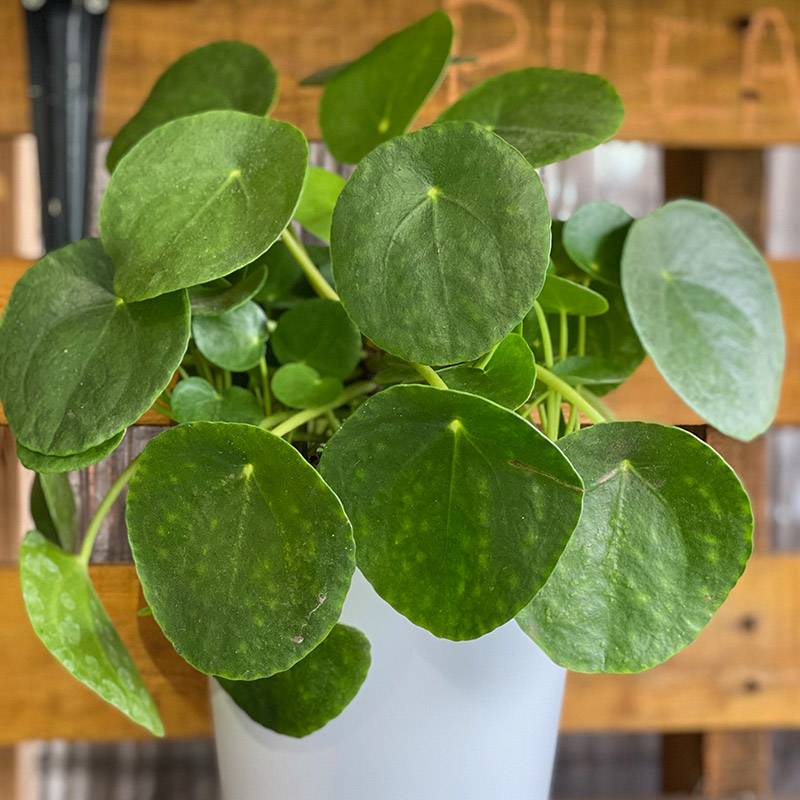
Pilea Peperomioides
Essential Plant Care Tips for your Pilea Peperomioides

Pilea Peperomioides
Essential Plant Care Tips for your Pilea Peperomioides
January’s Pet-Friendly Plant of the Month
Pilea Peperomioides
Care Tips for a Thriving Pet-Friendly Pilea Peperomioides – Your VIP Guide to Green Success:
Pilea Plant Care Tip From The Flower Lady
Pilea Plant Pro Tip: The Spin Cycle Secret!
Ever wonder why your Pilea leans towards the light like a botanical sunseeker? Well, here’s a little-known care hack to keep your Pilea Plant standing tall and proud.
Spin Your Pilea:
Every couple of weeks, give your Pilea a gentle spin. Rotate it a quarter turn or move it to a different location in your space. This simple act ensures that all sides of your plant receive their fair share of sunlight.
Why the Spin?
Pileas have a natural inclination to grow towards the light source. By rotating it regularly, you encourage even growth and prevent it from leaning or reaching excessively in one direction. Your Pilea plant will develop a more balanced and aesthetically pleasing form.
How to Spin:
- Hold the base of your Pilea gently but securely.
- Give it a smooth quarter turn in either direction.
- Alternatively, move your plant to a different spot to change its orientation.
By incorporating the spin cycle into your Pilea care routine, you’re not just ensuring a symmetrical and visually appealing plant – you’re also giving each leaf its fair share of the sunlight buffet. Happy spinning and thriving! 🔄🌿💚
Pilea Peperomioides: Your Chinese Money Plant Care Guide 🌿💰
Pilea Plant care is a piece of cake. Or should we say, a piece of leaf?. Here’s your VIP access to the care secrets that will make your Pilea plant thrive:
Light: Sunshine Sweet Spot! Place your Pilea where it can bask in bright, indirect light. Avoid harsh, direct sunlight, but don’t tuck it away in the dark. A bit of morning sun or filtered light is just what your Chinese Money Plant desires.
- Temperature: Pilea likes standard room temperatures between 60-75°F. Avoid sudden temperature drops and drafts – keep it cozy.
Watering: Moderation is Key! Keep the soil evenly moist, but don’t drown your Pilea. Allow the top inch of soil to dry before the next watering. It’s a balancing act – neither too thirsty nor too soggy.
- Bottoms Up: Water your Pilea from the bottom by placing the pot in a saucer filled with water. Let it soak up what it needs, and pour out any excess after about 20 minutes.
- Soil: Well-Draining Dance – Pilea prefers well-draining soil. Mix potting soil with perlite or sand to ensure it doesn’t get waterlogged.
- Fertilization: Easy on the Fertilizer – Feed your Pilea once a month during the growing season (spring and summer) with a balanced liquid fertilizer. A little plant snack to keep it happy and thriving.
Potting: Room to Grow, please! Choose a pot with drainage holes, and don’t cram your Pilea into a tiny space. Give it some room to spread its leafy wings. Repot every couple of years, and your Pilea will happily stretch its roots. Read this super informative article about keeping your plants in the container they came in. If its time to repot, check this insightful article: Repotting Houseplants Tips
- Propagation: Pups on Parade – Pilea is known for producing adorable baby plants or “pups.” Propagate by separating these pups and giving them their own pots. Share the Pilea love!
- Show Your Pilea Some Love: Wipe the leaves gently with a damp cloth to keep them dust-free. Your Pilea will thank you with vibrant, glossy leaves.
- Bonus Feng Shui Tip: Wealthy Vibes! Embrace the Feng Shui belief that Pilea brings good luck and financial prosperity. Place it in the wealth corner of your home and let the green abundance flow!
There you have it – the secrets to a happy, thriving Pilea Peperomioides. May your Chinese Money Plant bring you joy and a touch of botanical wealth! 🪴💚

ZZ Plant Zamioculcas Zamiifolia
Learn Care Tips for your ZZ Plant Zamioculcas Zamiifolia
ZZ Plant Zamioculcas Zamiifolia
Learn Care Tips for your ZZ Plant Zamioculcas Zamiifolia
ZZ Plant Zamioculcas Zamiifolia
Learn Care Tips for your ZZ Plant Zamioculcas Zamiifolia
January’s Pre-Potted Plant of The Month
ZZ Plant Zamioculcas Zamiifolia
A VIP’s Guide to Keeping Your ZZ Plant (Zamioculcas Zamiifolia) Healthy and Happy:
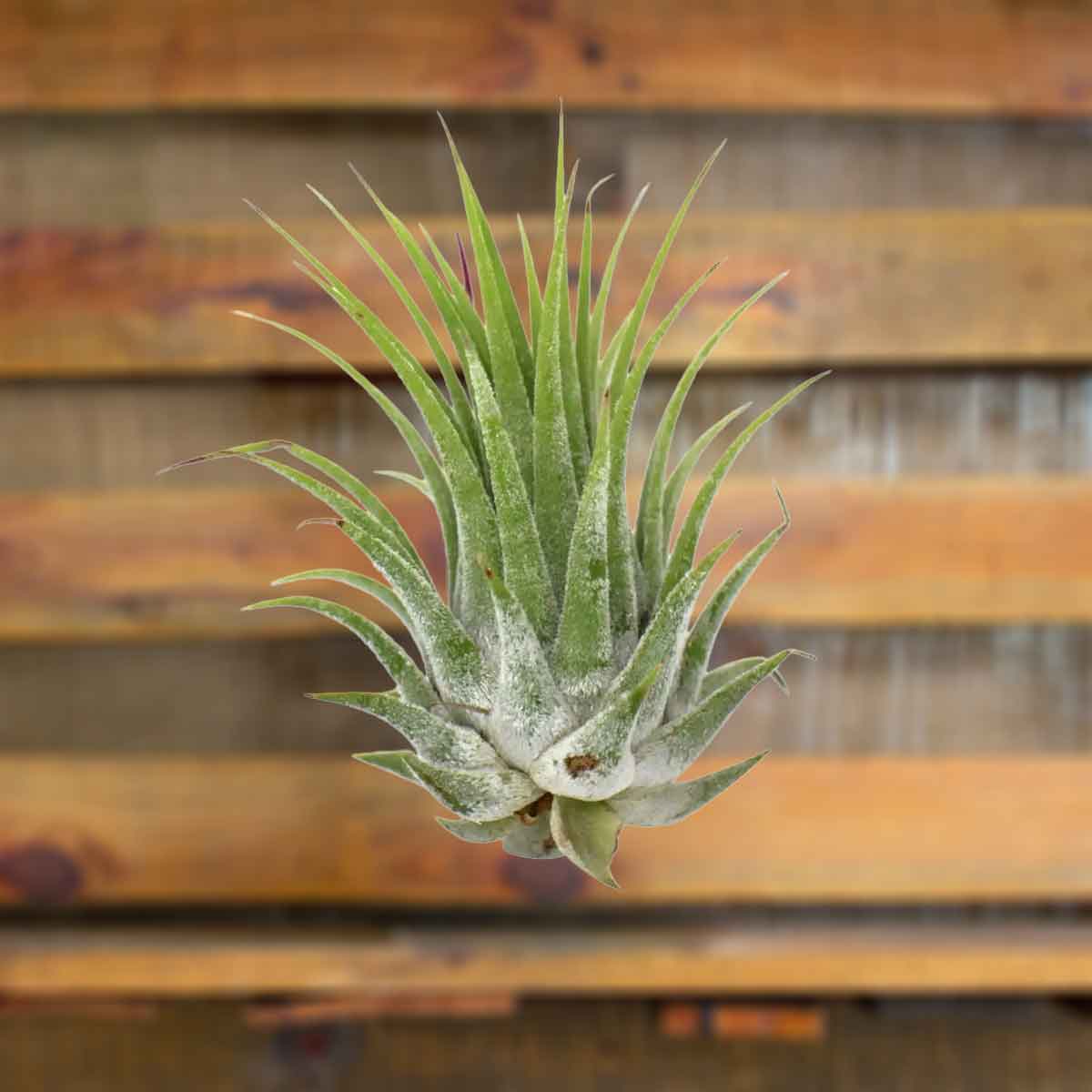
Ionantha Air Plant
Ionantha Air Plant care Tips
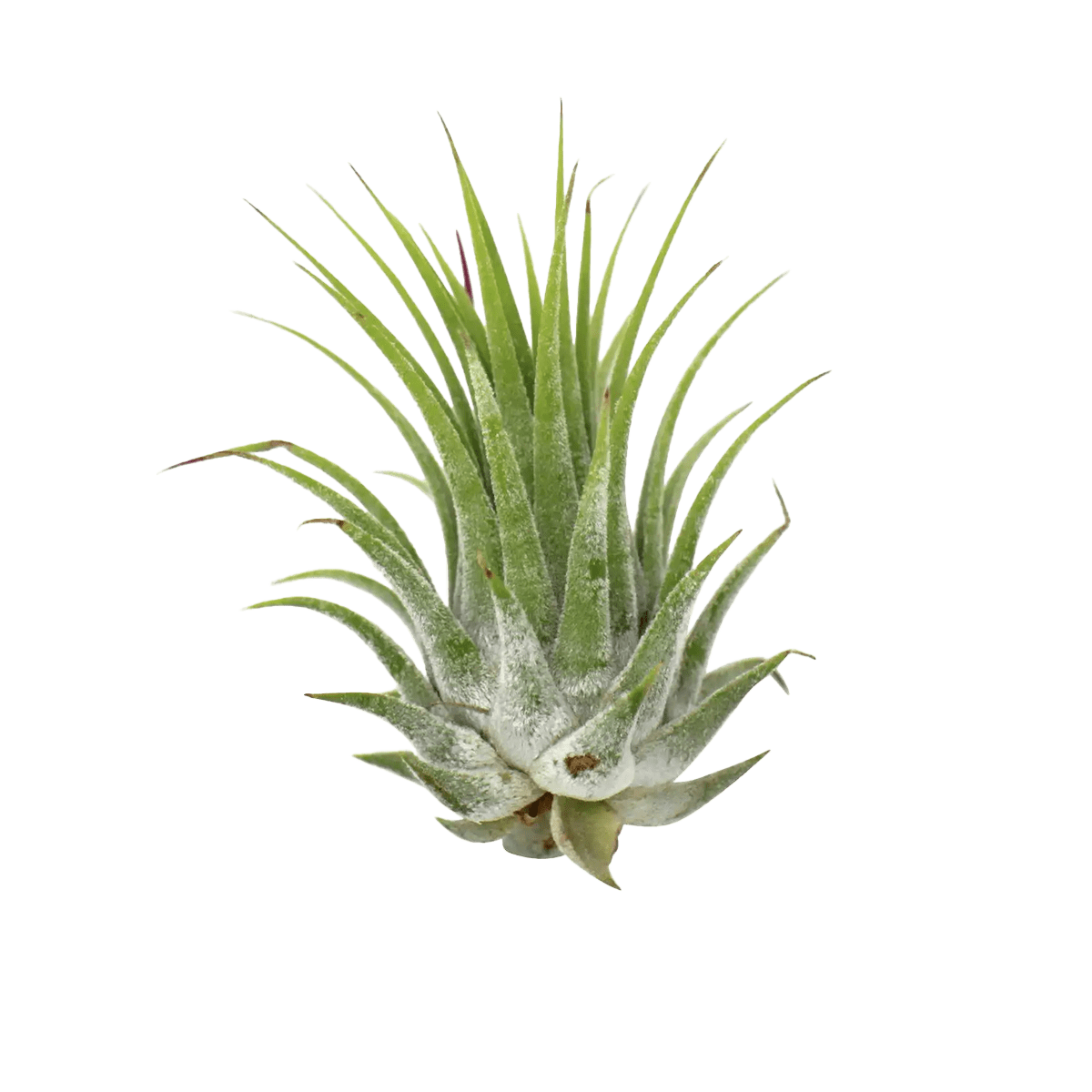
Ionantha Air Plant
Ionantha Air Plant care Tips
January’s Air Plant of The Month
Ionantha Air Plant
Care Tips for a Thriving Air Plant – Your VIP Guide to Green Success:
Welcome to the airy, light, and delightful world of Tillandsia Air Plants. The Easiest Plant to Love and The Hardest Plant to Kill
Air plants are like the rebels of the plant world, thriving without soil thanks to their special adaptations.
A plant that doesn’t need soil to grow? Yup, that’s right. These incredible life forms are epiphytic, meaning they derive moisture and nutrients from the air, rather than from soil. So, you can say goodbye to potting soil and dirt under your fingernails!
They are also incredibly resilient, making them perfect for those with, shall we say…a less-than-stellar track record with plants. These leafy survivors can put up with a lot, but with just a little love and attention, they’ll reward you with a stunning bloom that will make your heart (and Instagram feed) sing.
How to care for air plants: The Basics
Air Plant Care is as easy as 1-2-3
When caring for these beauties, keeping a few things in mind is essential. First off, they love bright but indirect light, so placing them near a window works like magic. They’re also relatively low maintenance when it comes to watering – they’ll be thriving even if you occasionally forget their existence (don’t worry, we won’t tell them)!😉 A mist or quick soak once every couple of weeks is usually enough to keep them hydrated. However, make sure you let them dry thoroughly afterward to prevent rotting. And if you want your air plant to flourish even more, treat it with a gentle fertilizer every few months. With just a little TLC your air plants will thrive and add that touch of whimsy to your space!
- Watering: Contrary to their name, Air Plants do require water. A good soaking in a bath of room temperature water for about 20-30 minutes once a week will do the trick. Shake off any excess water and let them dry upside down to prevent rotting.
- Lighting: Air Plants love bright, indirect light. Place them near a window, but not in direct sunlight.
- Temperature: Keep your Air Plants happy by maintaining a temperature between 50-90°F. They can handle a wide range, but they’re not fans of frost or extreme heat.
Still unsure about your ability to care for these little wonders? Just remember our motto: “The easiest plant to love and the hardest plant to kill.” You got this!
Words from our Grinning Green Gang
Join our Plant of the Month Club and bring home a new plant friend every month. It’s more than a subscription; it’s a journey towards a greener, healthier, and happier life.
Turning my home into a green oasis one plant at a time. I love the thrill of discovering a new plant each month!
Mercedez
Their plant care guides are a lifesaver! I’ve learned so much, and my plants are thriving. Thank you!
Jess Fabian
Healthy plants, handy care guides, and swift delivery.
Randy
Are you prepared to turn over a new leaf?
Hop on the Plant of the Month Club Express – Your Ticket to a Verdant Voyage, and bring in a fresh leafy pal every month.



